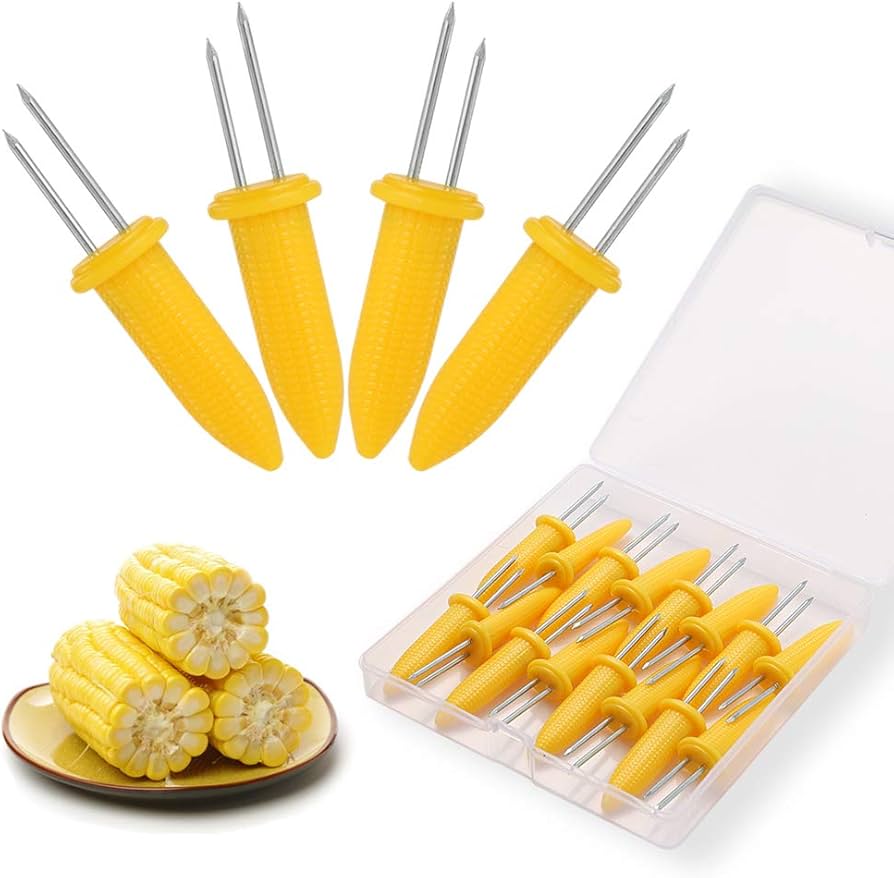History of Corn on the Cob Holders
Corn on the cob holders, also known as skewers, have a long history that goes back to the early nineteenth century, when corn became a staple cuisine in many regions of the world. Originally made of wood or bone, these skewers were vital for eating corn without burning one’s fingers or losing grasp on the slippery cob.
Usage and Design Evolution.

Corn on the cob containers were originally simple in form, but have since evolved to provide both functionality and aesthetics. Early versions included two prongs, which were often made of sturdy materials such as metal or wood, to ensure a firm grip on the corncob. Skewers evolved alongside cooking utensils, with modern designs featuring ergonomic handles for comfort and safety while in use.
Legacy and Cultural Significance
Corn on the cob holders have cultural importance, particularly in areas where corn is a food mainstay. They are widely used at summer barbecues, picnics, and outdoor events to represent shared meals and community. The holders also demonstrate craftsmanship, with vintage pieces frequently prized for their longevity and nostalgic appeal.

Modern-day use
Corn on the cob holders are still used in modern kitchens to serve and consume corn. Their efficient design guarantees that each diner may enjoy their corn without causing a mess or bother. Furthermore, newer varieties incorporate novel features such as heat-resistant handles or themed patterns to enhance dining experiences.
The vintage corn on the cob holders skewers exemplify both functionality and tradition, reflecting their enduring role in culinary practices worldwide. As they continue to evolve with modern needs and styles, these holders remain an essential tool for enjoying one of nature’s simplest pleasures—freshly roasted corn on the cob.


















